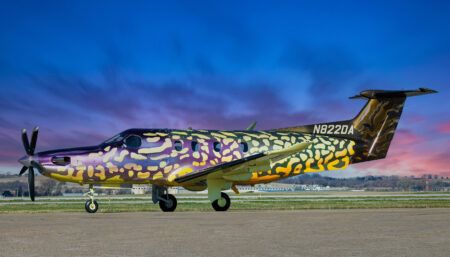J P Magnano of 3D Viz explains the role of virtual configuration programs
How are virtual configuration programs being used?
Virtual configurators have become immensely popular in the last couple of years. It is not a surprise that this trend has coincided with the advent of the iPad and App Store. They are used as an initial approach to show customers the possibilities offered by the aircraft. For smaller, less customizable interiors, they are used as a final selection and contract tool. For partly customizable interiors they are used to provide inspiration and get an initial feel for the customer’s preferences. The designer will then use real samples and color boards to refine the selections. We also frequently produce additional custom renderings to show the customer the final design, to assist with the approval process.
Are there applications beyond design?
In cases where our configurator is used as a final design tool, it can also be used to produce a legal contract. For example, in the case of the Embraer Phenom 100, the sales person has a more complete version of the app than the one downloaded by the customer from the App Store. It not only contains materials, finishes and storage options, but also has a protected area with the complete list of standard options, additional options, pricing, weight and cockpit electronics. After all the options have been selected, it can output a contract for the customer to sign. This reduces the time it takes to specify an aircraft dramatically.
How has the technology progressed over the past couple of years?
Initially, our configurators were created in Flash. They worked well, but were not nearly as interactive and as nice looking as today’s. We were limited by several factors, such as screen resolution, operating systems and render technology. At the dawn of this technology there were no touchscreens or swiping menus. Things became much simpler for the user when we were able to port the application to iOS. Images are now in full HD resolution and completely photorealistic. Also, the platform is standardized, so we know it will work on every iPad. Wherever the user is, they will be able download the application, sign the contract and email it back.
What functionality and quality improvements do you foresee?
At NBAA 2014 we showed our new 3D technology configurator. It looks just as photorealistic as our current offering, but has many additional advantages. For example, it can incorporate an unlimited amount of materials, is view-independent and can be updated by the user without having to come back to us. In the long term, the program will be incredibly complete and realistic. Users will be able to use an evolved version of Google Glass, stepping into the virtual aircraft and making layout and design decisions from inside the cabin. Designers will select materials and finishes as they go through the cabin.
What other presentation technologies are growing in popularity?
Believe it or not, the tried and true rendering is gaining in popularity. This is because not all companies were offering renderings to every customer, but their use has now become pretty much standardized. Some companies have in-house rendering capabilities and others hire companies such as ours to provide these.
J P Magnano is director of 3D Viz. Click here to read an article on presentation tools in the September 2014 issue of Business Jet Interiors International.





